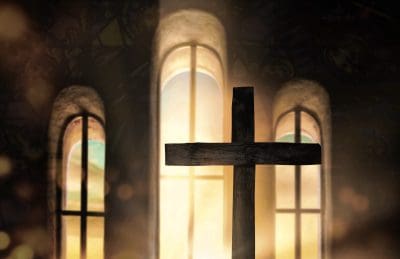Why did Christ have no beauty or majesty?
Isaiah 53:2
When the angel appeared to the shepherds on the hills surrounding Bethlehem, the glory of the Lord shone around him. But when they went to behold the King of glory himself, he was wrapped in simple cloths and lying powerless in a manger. Why was he stripped of all glory? Why did he have no beauty or majesty to attract us to him, nothing in his appearance that we should desire him? Why did he “empty himself” of the appearance of his equality with God as Paul says in Philippians 2? Why was the wonderful statement by Charles Wesley true, “Mild his lays his glory by, born that man no more may die”?
This is even more acute when we realize that Jesus did in fact let some of his divine glory shine on the Mount of Transfiguration. And also when we hear Jesus ask his Father for his glory back, praying, “And now, Father, glorify me in your presence with the glory I had with you before the world began.” (John 17:5) How much more did Christ allow his glory to shine brighter than the sun around Saul of Tarsus on the Damascus Road, leading directly to Saul’s conversion! And for all eternity, the New Jerusalem will shine with the glory of Christ such that the city does not need the light of the sun, moon, or a lamp to shine. (Rev. 21:23) Clearly there is nothing wrong with Christ displaying overpowering beauty and majesty. So why hide it in his incarnation?
“God has to reveal a hidden glory to the eyes of their hearts, an invisible spiritual glory seen only by faith.”
It seems to me that the answer to this question has to do with the work God has to do in the souls of all his people at the moment of justifying faith. God has to reveal a hidden glory to the eyes of their hearts, an invisible spiritual glory seen only by faith. Jesus’ humble, even repulsive outward appearance must be penetrated by the powerful revelation of the Spirit. Christ must be the exact opposite of Satan, who masquerades as an “angel of light.” (2 Cor. 11:14) So, he must also be the opposite of the Scribes and Pharisees, whom Jesus called “whitewashed tombs,” which look beautiful on the outside but on the inside, full of dead men’s bones and everything unclean. (Mt. 23:37) When Jesus was bleeding out on the cross, back shredded by the lash, scalp lacerated by the thorns, hands and feet pierced by the massive iron nails, the prophecy cited above was maximized: no beauty, no majesty, nothing in his appearance to attract the eye. But his glory never shone more brightly than at that hideous, horrible moment. Only the eyes of faith can see through the appearance to the radiant beauty within.
So, God ordained the beauty and majesty of Christ’s person to be seen first by his people, and only then, the beauty and majesty of his appearance. That began at the stable in Bethlehem and was perfected at the cross.





